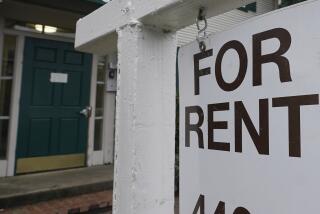Board Ignores Rules Until It Comes to His Fence : Condominiums: Homeowner directors have the right to start enforcement anew where previous boards failed to exercise controls.
- Share via
QUESTION: I am a member of a homeowners association. The covenant regulations have been ignored over the years by homeowners who have constructed buildings, fences and other structures without obtaining the required permissions from the association. No action was taken against any violator. I constructed a chain-link interior fence, which encloses my courtyard.
I had assumed that the longstanding passivity of the homeowners board was the equivalent of tacit permission to build the fence. However, the homeowners board has given me 60 days to remove the fence or face the legal consequences. Does failure to enforce regulations equate to tacit permission? Does the board have the right to enforce a regulation in my case while ignoring numerous similar violations?
ANSWER: This is one of the most difficult questions facing condominium and homeowner association boards. In many instances, the association has a set of documents, often called “architectural controls.” These regulations spell out what a homeowner can and cannot do, and often spell out the requirement for obtaining board approval prior to the installation or construction of the structure in question.
However, in many associations we have found that previous boards have completely ignored the enforcement of the architectural control covenants. Then one day the board wakes up and decides that it is high time to begin enforcement.
This apparently has happened in your case.
The law is quite clear that a board of directors of a condominium or a homeowner association cannot arbitrarily and selectively enforce its rules and regulations. The board cannot tell one owner to refrain from installing a fence while at the same time ignoring another owner (or owners) who have installed similar fences.
But this does not mean that a board of directors cannot decide to start anew, and begin to enforce the rules and regulations of the association. Indeed, a board of directors has a fiduciary obligation to enforce its own rules. If the board does not take appropriate action, individual owners certainly have the right to claim that the board is not honoring its obligations to diligently enforce the rules of that organization.
Recent cases from around the country on this very issue have made it quite clear that the board of directors of an association does have the right to “sweep the association clean” and begin to enforce, for future situations, the existing rules and regulations.
Oversimplified, those courts that have reviewed these kinds of issues have taken the position that you have to start somewhere. The fact that there may have been violations and omissions in the past does not excuse future boards from beginning to take a hard-line position on those rules and regulations.
I recognize that this answer does not really help you. It may very well be that the board has decided to begin anew. However, you should review whether they have made such a decision, and if so, have they advised all of the unit owners, in writing, of this new policy?
After all, if the board has not informed the unit owners of its new position, a good argument could be made that the board still is being lax, and then, of course, they would not have the right to selectively and arbitrarily enforce the regulations against you, and not others.
You may also want to consider filing an application with the board for permission, retroactively, to build your fence. Read your regulations carefully to determine what the board’s role is, and whether there are any time limitations on the board’s requirement to respond.
It may very well be that you can solve both problems at the same time. On the other hand, by making the application to the board, you will be complying with the rules and regulations of your association. On the other hand, the board may decide to approve your application, which will permit you to build the fence in conformity with the rules.
As in every situation with respect to a condominium or homeowner association, you must start with the operating documents of the association. Keep in mind that the declaration is of primary importance, followed then by the bylaws and then the rules and regulations of the association.
More to Read
Sign up for Essential California
The most important California stories and recommendations in your inbox every morning.
You may occasionally receive promotional content from the Los Angeles Times.










